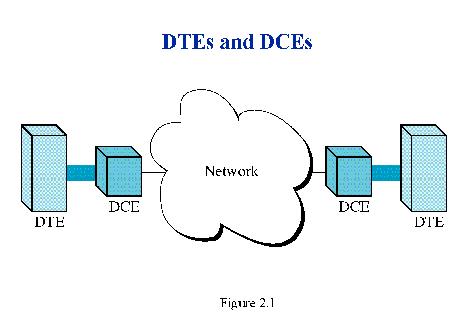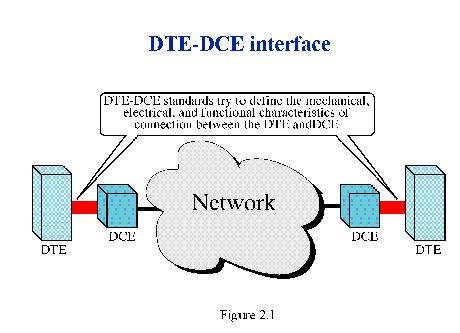| |
DTE-DCE INTERFACE

more...
Data Terminal Equipment (DTE)
Data Circuit-Terminating Equipment (DCE)
note:
When it makes sense
Standards

more...
:
figure 2.1The DTE generates the data and passes them, along
with necessary control characters, to a DCE. The DCE converts the signal
to a format appropriate to the transmission medium and introduces it onto
the network link. When the signal arrives at the receiving end, This
process is reversed.
- Return
figure 2.2The EIA (Electronic Industries Association) and the
ITU-T (International Telecommunication Union- Telecommunication Standards
Committee) have been involved in developing DTE-DCE interface standards.
- Return
- The EIA standards are called EIA-232,
EIA-442, EIA-449 and so on.
- The ITU-T standards are called the V series and the X series.
When it makes sense
- In order to understand the data, both ought to speak the same
"language" modulating method).
- Although "the brains" (DTE) do not need to be coordinated with each
other, but every "brains" have to coordinates with its own "mouth"
(DCE).
- In order that, the things we say "make sense" integrity).
- Return
EIA-232
- EIA-232(previously called RS-232 issued in 1962) defines the mechanical,electrical
and functional
characteristics of the interface between a DTE and a DCE.
Other
Links to EIA-232:
http://www.rad.com/networks/1995/rs232/rs232.htm
http://www.cit.ac.nz/smac/dc100www/dc_008.htm
|